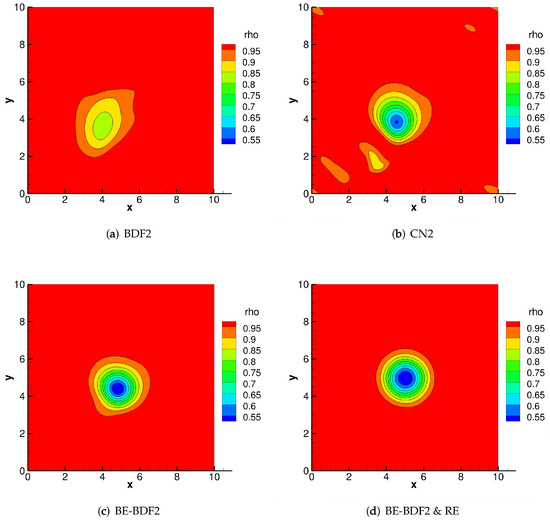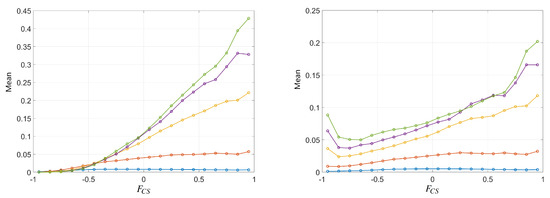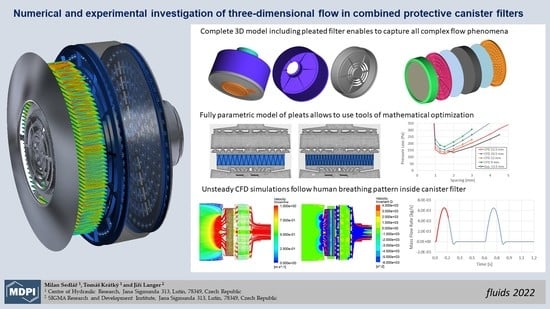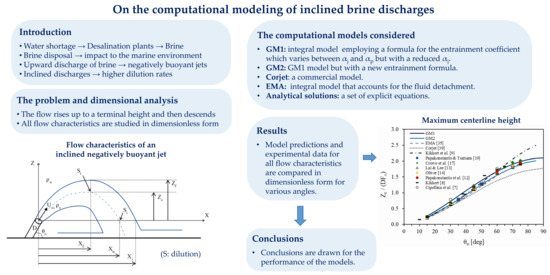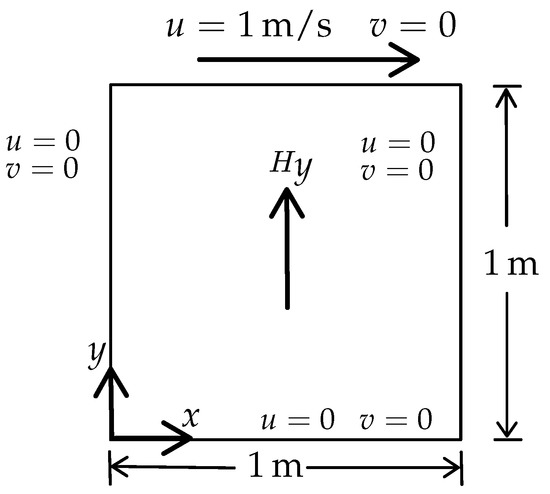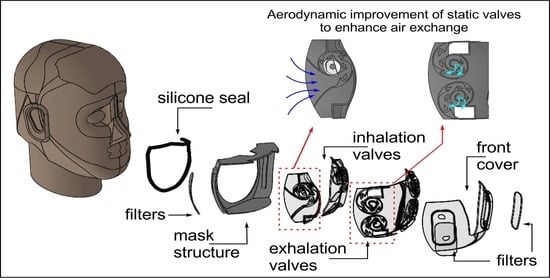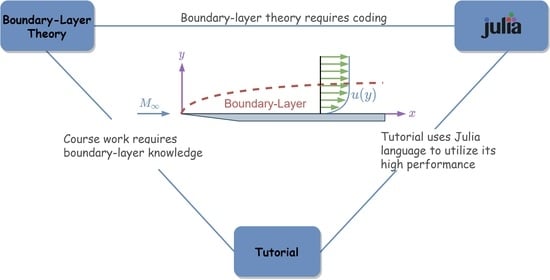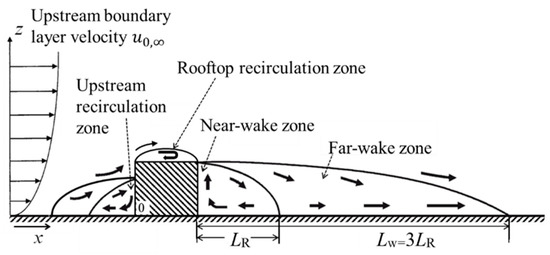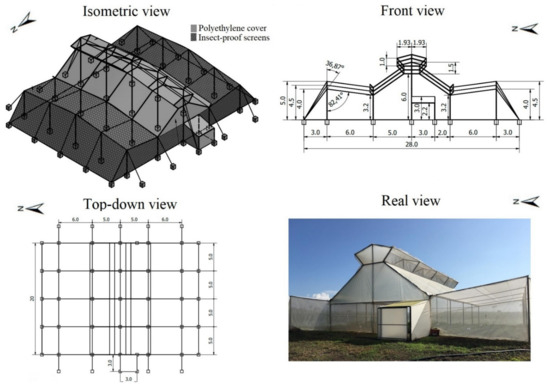Feature Paper for Mathematical and Computational Fluid Mechanics
Share This Topical Collection
Editors
 Dr. Nicholas Battista
Dr. Nicholas Battista
 Dr. Nicholas Battista
Dr. Nicholas Battista
E-Mail
Website
Guest Editor
Department of Mathematics and Statistics, 2000 Pennington Road, The College of New Jersey, Ewing Township, NJ 08628, USA
Interests: biological fluid dynamics; biological propulsion; teaching computational fluid dynamics; immersed boundary method; fluid-structure interaction
 Dr. Amy Buchmann
Dr. Amy Buchmann
 Dr. Amy Buchmann
Dr. Amy Buchmann
E-Mail
Website
Guest Editor
Department of Mathematics, University of San Diego, 5998 Alcalá Park, San Diego, CA 92110, USA
Interests: computational fluid dynamics; biofluids; Stokes flow
 Dr. Antonis Anastasiou
Dr. Antonis Anastasiou
 Dr. Antonis Anastasiou
Dr. Antonis Anastasiou
E-Mail
Website
Guest Editor
Department of Chemical Engineering and Analytical Science, The University of Manchester, Manchester, UK
Interests: microfluidics; biomaterials; biomedical engineering; multifunctional medical devices; tissue engineering; lasers in the restoration of hard tissues
Special Issues, Collections and Topics in MDPI journals
Topical Collection Information
Dear Colleagues,
This topical collection features leading research on theoretical and computational studies of problems in fundamental and applied fluid mechanics. Waivers or discounts on article processing charges (APC) will be granted to high-quality papers submitted to this collection. The main aims of this topical collection are (1) to highlight recent advances using mathematical modeling, applied analysis, and numerical simulations to answer problems in modern fluid dynamics, and (2) to disseminate new theoretical and computational frameworks for fluids. We welcome original research papers, reviews, communications, short communications, code release papers, educational papers, and opinions.
Possible topics include, but are not limited to, the following:
- Novel mathematical models for understanding contemporary fluid mechanic problems in the life sciences, oceanography, geophysics, magneto-fluid dynamics, astrophysics, and other scientific disciplines;
- New numerical methods for solving the equations of fluid motion, fluid-structure interaction problems, interfacial flows, etc.;
- New applications of numerical simulations to understand fluid phenomena, particularly those of relevance to microfluidics, medicine, geophysical fluid dynamics, bioinspired design, and astrophysics;
- The mathematical analysis of the equations of fluid motion, including the use of perturbation techniques to obtain asymptotic solutions for problems relevant to fundamental and applied fluid dynamics;
- The use of machine learning in computational fluid dynamics.
Prof. Dr. Laura A. Miller
Dr. Nicholas Battista
Dr. Amy Buchmann
Dr. Antonis Anastasiou
Guest Editors
Manuscript Submission Information
Manuscripts should be submitted online at www.mdpi.com by registering and logging in to this website. Once you are registered, click here to go to the submission form. Manuscripts can be submitted until the deadline. All submissions that pass pre-check are peer-reviewed. Accepted papers will be published continuously in the journal (as soon as accepted) and will be listed together on the collection website. Research articles, review articles as well as short communications are invited. For planned papers, a title and short abstract (about 100 words) can be sent to the Editorial Office for announcement on this website.
Submitted manuscripts should not have been published previously, nor be under consideration for publication elsewhere (except conference proceedings papers). All manuscripts are thoroughly refereed through a single-blind peer-review process. A guide for authors and other relevant information for submission of manuscripts is available on the Instructions for Authors page. Fluids is an international peer-reviewed open access monthly journal published by MDPI.
Please visit the Instructions for Authors page before submitting a manuscript.
The Article Processing Charge (APC) for publication in this open access journal is 1800 CHF (Swiss Francs).
Submitted papers should be well formatted and use good English. Authors may use MDPI's
English editing service prior to publication or during author revisions.
Published Papers (14 papers)
Open AccessArticle
Lower-Dimensional Model of the Flow and Transport Processes in Thin Domains by Numerical Averaging Technique
by
Maria Vasilyeva, Nana Adjoah Mbroh and Mehrube Mehrubeoglu
Viewed by 1651
Abstract
In this work, we present a lower-dimensional model for flow and transport problems in thin domains with rough walls. The full-order model is given for a fully resolved geometry, wherein we consider Stokes flow and a time-dependent diffusion–convection equation with inlet and outlet
[...] Read more.
In this work, we present a lower-dimensional model for flow and transport problems in thin domains with rough walls. The full-order model is given for a fully resolved geometry, wherein we consider Stokes flow and a time-dependent diffusion–convection equation with inlet and outlet boundary conditions and zero-flux boundary conditions for both the flow and transport problems on domain walls. Generally, discretizations of a full-order model by classical numerical schemes result in very large discrete problems, which are computationally expensive given that sufficiently fine grids are needed for the approximation. To construct a computationally efficient numerical method, we propose a model-order-reduction numerical technique to reduce the full-order model to a lower-dimensional model. The construction of the lower-dimensional model for the flow and the transport problem is based on the finite volume method and the concept of numerical averaging. Numerical results are presented for three test geometries with varying roughness of walls and thickness of the two-dimensional domain to show the accuracy and applicability of the proposed scheme. In our numerical simulations, we use solutions obtained from the finite element method on a fine grid that can resolve the complex geometry at the grid level as the reference solution to the problem.
Full article
►▼
Show Figures
Open AccessArticle
BE-BDF2 Time Integration Scheme Equipped with Richardson Extrapolation for Unsteady Compressible Flows
by
Alessandra Nigro
Viewed by 2084
Abstract
In this work we investigate the effectiveness of the Backward Euler-Backward Differentiation Formula (BE-BDF2) in solving unsteady compressible inviscid and viscous flows. Furthermore, to improve its accuracy and its order of convergence, we have equipped this time integration method with the Richardson Extrapolation
[...] Read more.
In this work we investigate the effectiveness of the Backward Euler-Backward Differentiation Formula (BE-BDF2) in solving unsteady compressible inviscid and viscous flows. Furthermore, to improve its accuracy and its order of convergence, we have equipped this time integration method with the Richardson Extrapolation (RE) technique. The BE-BDF2 scheme is a second-order accurate, A-stable, L-stable and self-starting scheme. It has two stages: the first one is the simple Backward Euler (BE) and the second one is a second-order Backward Differentiation Formula (BDF2) that uses an intermediate and a past solution. The RE is a very simple and powerful technique that can be used to increase the order of accuracy of any approximation process by eliminating the lowest order error term(s) from its asymptotic error expansion. The spatial approximation of the governing Navier–Stokes equations is performed with a high-order accurate discontinuous Galerkin (dG) method. The presented numerical results for canonical test cases, i.e., the isentropic convecting vortex and the unsteady vortex shedding behind a circular cylinder, aim to assess the performance of the BE-BDF2 scheme, in its standard version and equipped with RE, by comparing it with the ones obtained by using more classical methods, like the BDF2, the second-order accurate Crank–Nicolson (CN2) and the explicit third-order accurate Strong Stability Preserving Runge–Kutta scheme (SSP-RK3).
Full article
►▼
Show Figures
Open AccessArticle
Dynamic Mixed Modeling in Large Eddy Simulation Using the Concept of a Subgrid Activity Sensor
by
Josef Hasslberger
Cited by 2 | Viewed by 1321
Abstract
Following the relative success of mixed models in the Large Eddy Simulation of complex turbulent flow configurations, an alternative formulation is suggested here which incorporates the concept of a local subgrid activity sensor. The general idea of mixed models is to combine the
[...] Read more.
Following the relative success of mixed models in the Large Eddy Simulation of complex turbulent flow configurations, an alternative formulation is suggested here which incorporates the concept of a local subgrid activity sensor. The general idea of mixed models is to combine the advantages of structural models (superior alignment properties), usually of the scale similarity type, and functional models (superior stability), usually of the eddy viscosity type, while avoiding their disadvantages. However, the key question is the mathematical realization of this combination, and the formulation in this work accounts for the local level of underresolution of the flow. The justification and evaluation of the newly proposed mixed model is based on a priori and a posteriori analysis of homogeneous isotropic turbulence and laminar–turbulent transition in the Taylor–Green vortex, respectively. The suggested model shows a robust and accurate behavior for the cases investigated. In particular, it outperforms the separate structural and functional base models as well as the simulation without an explicit subgrid-scale model.
Full article
►▼
Show Figures
Open AccessArticle
Numerical and Experimental Investigation of Three-Dimensional Flow in Combined Protective Canister Filters
by
Milan Sedlář, Tomáš Krátký and Jiří Langer
Cited by 3 | Viewed by 2399
Abstract
This work deals with the numerical and experimental investigation of flow in the protective filters which combine fibrous pleats and the absorbent cartridge. The flow through the complete 3D geometry of all parts of the filters, including complex geometry of the pleats, is
[...] Read more.
This work deals with the numerical and experimental investigation of flow in the protective filters which combine fibrous pleats and the absorbent cartridge. The flow through the complete 3D geometry of all parts of the filters, including complex geometry of the pleats, is numerically modeled using high-quality computational grids. The sorbent filling, textile dividers as well as the material of filtration pleats are modeled as the porous media with the coefficients of the quadratic Forchheimer equation derived from the experiments in the laboratory located at the SIGMA Research and Development Institute. A comprehensive CFD analysis has been carried out using the ANSYS CFX package with the SST turbulence model, which combines advantages of both the high- and the low-Reynolds number turbulence models. The fully parametric description of the pleats enables the generation of high-quality structured computational grids for a wide range of pleat heights and widths and to use numerical shape optimization process. The numerical simulations show very good agreement of calculated and measured pressure drop for all variants of the complex geometry of the combined filter. To simulate a real application of the protective filter, the unsteady simulations which follow the human breathing pattern have been performed with the flow rate corresponding to the increased human activity.
Full article
►▼
Show Figures
Open AccessArticle
On the Computational Modeling of Inclined Brine Discharges
by
Ilias G. Papakonstantis and Panos N. Papanicolaou
Cited by 3 | Viewed by 2437
Abstract
In this paper, five computational approaches are used to model bulk flow parameters of inclined round negatively buoyant jets. More specifically, an integral model employing Gaussian distributions for velocity and apparent acceleration of gravity, proposed in earlier study, is implemented with two different
[...] Read more.
In this paper, five computational approaches are used to model bulk flow parameters of inclined round negatively buoyant jets. More specifically, an integral model employing Gaussian distributions for velocity and apparent acceleration of gravity, proposed in earlier study, is implemented with two different entrainment formulae. The remaining three computational approaches include an integral model known as EMA, which takes into consideration the fluid detachment occurring in the inner side of the flow near the terminal height, the widely known commercial model Corjet and analytical solutions that were proposed in a previous study. Predictions are provided for the maximum centerline height and its horizontal position, the terminal height of the upper jet boundary, the horizontal distance to the points where the jet centerline and the upper jet boundary return to the source level, the centerline dilution at the maximum height and the centerline dilution at the return point. Detailed comparisons are made in dimensionless form between the estimations provided by the models and a wide range of experimental data for discharge angles between 15° and 90°. Conclusions are drawn regarding the performance of the five computational approaches.
Full article
►▼
Show Figures
Open AccessArticle
A Direct-Forcing Immersed Boundary Method for Incompressible Flows Based on Physics-Informed Neural Network
by
Yi Huang, Zhiyu Zhang and Xing Zhang
Cited by 13 | Viewed by 5827
Abstract
The application of physics-informed neural networks (PINNs) to computational fluid dynamics simulations has recently attracted tremendous attention. In the simulations of PINNs, the collocation points are required to conform to the fluid–solid interface on which no-slip boundary condition is enforced. Here, a novel
[...] Read more.
The application of physics-informed neural networks (PINNs) to computational fluid dynamics simulations has recently attracted tremendous attention. In the simulations of PINNs, the collocation points are required to conform to the fluid–solid interface on which no-slip boundary condition is enforced. Here, a novel PINN that incorporates the direct-forcing immersed boundary (IB) method is developed. In the proposed IB-PINN, the boundary conforming requirement in arranging the collocation points is eliminated. Instead, velocity penalties at some marker points are added to the loss function to enforce no-slip condition at the fluid–solid interface. In addition, force penalties at some collocation points are also added to the loss function to ensure compact distribution of the volume force. The effectiveness of IB-PINN in solving incompressible Navier–Stokes equations is demonstrated through the simulation of laminar flow past a circular cylinder that is placed in a channel. The solution obtained using the IB-PINN is compared with two reference solutions obtained using a conventional mesh-based IB method and an ordinary body-fitted grid method. The comparison indicates that the three solutions are in excellent agreement with each other. The influences of some parameters, such as weights for different loss components, numbers of collocation and marker points, hyperparameters in the neural network, etc., on the performance of IB-PINN are also studied. In addition, a transfer learning experiment is conducted on solving Navier–Stokes equations with different Reynolds numbers.
Full article
►▼
Show Figures
Open AccessArticle
A Monolithic Finite Element Formulation for Magnetohydrodynamics Involving a Compressible Fluid
by
Adhip Gupta and C. S. Jog
Cited by 2 | Viewed by 1760
Abstract
This work develops a new monolithic finite-element-based strategy for magnetohydrodynamics (MHD) involving a compressible fluid based on a continuous velocity–pressure formulation. The entire formulation is within a nodal finite element framework, and is directly in terms of physical variables. The exact linearization of
[...] Read more.
This work develops a new monolithic finite-element-based strategy for magnetohydrodynamics (MHD) involving a compressible fluid based on a continuous velocity–pressure formulation. The entire formulation is within a nodal finite element framework, and is directly in terms of physical variables. The exact linearization of the variational formulation ensures a quadratic rate of convergence in the vicinity of the solution. Both steady-state and transient formulations are presented for two- and three-dimensional flows. Several benchmark problems are presented, and comparisons are carried out against analytical solutions, experimental data, or against other numerical schemes for MHD. We show a good coarse-mesh accuracy and robustness of the proposed strategy, even at high Hartmann numbers.
Full article
►▼
Show Figures
Open AccessArticle
Investigation of a Light Boxplane Model Using Tuft Flow Visualization and CFD
by
Elena Karpovich, Djahid Gueraiche, Natalya Sergeeva and Alexander Kuznetsov
Cited by 5 | Viewed by 3454
Abstract
In this paper, we addressed the flow patterns over a light boxplane scale model to explain the previously discovered disagreement between its predicted and experimental aerodynamic characteristics. By tuft flow and CFD visualization, we explored the causes yielding a large zero lift pitching
[...] Read more.
In this paper, we addressed the flow patterns over a light boxplane scale model to explain the previously discovered disagreement between its predicted and experimental aerodynamic characteristics. By tuft flow and CFD visualization, we explored the causes yielding a large zero lift pitching moment coefficient, lateral divergence, difference in fore and aft elevator lift, and poor high lift performance of the aircraft. The investigation revealed that the discrepancy in the pitching moment coefficient and lateral stability derivatives can be attributed to insufficient accuracy of the used predictive methods. The difference in fore and aft elevator lift and poor high lift performance of the aircraft may occur due to the low local Reynolds number, which causes the early flow separation over the elevators and flaperons when deflected downward at angles exceeding 10°. Additionally, some airframe changes are suggested to alleviate the lateral divergence of the model.
Full article
►▼
Show Figures
Open AccessArticle
Proposal of a Mask and Its Performance Analysis with CFD for an Enhanced Aerodynamic Geometry That Facilitates Filtering and Breathing against COVID-19
by
Boris Miguel López-Rebollar, Abad Posadas-Bejarano, Daury García-Pulido, Adrián Torres-Maya and Carlos Díaz-Delgado
Cited by 6 | Viewed by 3440
Abstract
As a result of the recent events associated with the SARS-CoV-2 around the world, there has been a need for research to strengthen health care. The use of masks or respirators has been an effective measure, reducing the risk of contagion caused by
[...] Read more.
As a result of the recent events associated with the SARS-CoV-2 around the world, there has been a need for research to strengthen health care. The use of masks or respirators has been an effective measure, reducing the risk of contagion caused by the spread of the virus in public places. Currently, there are masks that retain up to 99% of particles >0.3 microns; however, they lack an airtight seal with the face, leading to discomfort and poor protection in conditions without social distancing and areas without ventilation. The device proposed in this study includes a geometric design of static valves with convergent spirals and interior baffles that promotes enhanced aerodynamics with bidirectional flow. According to the analysis and CFD simulation of the proposed reusable, washable, and economic mask and valve system for breathing, coughing, and sneezing events, enhanced air exchange could be maintained, facilitating a higher inhalation flow through the side of the mask (62%) and a higher exhalation through the front of the mask (74%), thereby avoiding the recirculation of the flow to the interior of the mask. The inclusion of filters with KN95 characteristics in the inlets and outlets maintains velocities below 10 cm/s, reducing the probability of infection.
Full article
►▼
Show Figures
Open AccessEditor’s ChoiceTutorial
A CFD Tutorial in Julia: Introduction to Compressible Laminar Boundary-Layer Flows
by
Furkan Oz and Kursat Kara
Cited by 14 | Viewed by 5093
Abstract
A boundary-layer is a thin fluid layer near a solid surface, and viscous effects dominate it. The laminar boundary-layer calculations appear in many aerodynamics problems, including skin friction drag, flow separation, and aerodynamic heating. A student must understand the flow physics and the
[...] Read more.
A boundary-layer is a thin fluid layer near a solid surface, and viscous effects dominate it. The laminar boundary-layer calculations appear in many aerodynamics problems, including skin friction drag, flow separation, and aerodynamic heating. A student must understand the flow physics and the numerical implementation to conduct successful simulations in advanced undergraduate- and graduate-level fluid dynamics/aerodynamics courses. Numerical simulations require writing computer codes. Therefore, choosing a fast and user-friendly programming language is essential to reduce code development and simulation times. Julia is a new programming language that combines performance and productivity. The present study derived the compressible Blasius equations from Navier–Stokes equations and numerically solved the resulting equations using the Julia programming language. The fourth-order Runge–Kutta method is used for the numerical discretization, and Newton’s iteration method is employed to calculate the missing boundary condition. In addition, Burgers’, heat, and compressible Blasius equations are solved both in Julia and MATLAB. The runtime comparison showed that Julia with
loops is 2.5 to 120 times faster than MATLAB. We also released the Julia codes on our GitHub page to shorten the learning curve for interested readers.
Full article
►▼
Show Figures
Open AccessArticle
Fluid Dynamics in Curvilinear Coordinates without Fictitious Forces
by
Christian Y. Cardall
Viewed by 2098
Abstract
The use of curvilinear coordinates is sometimes indicated by the inherent geometry of a fluid dynamics problem, but this introduces fictitious forces into the momentum equations that spoil the strict conservative form. If one is willing to work in three dimensions, these fictitious
[...] Read more.
The use of curvilinear coordinates is sometimes indicated by the inherent geometry of a fluid dynamics problem, but this introduces fictitious forces into the momentum equations that spoil the strict conservative form. If one is willing to work in three dimensions, these fictitious forces can be eliminated by solving for rectangular (Cartesian) momentum components on a curvilinear mesh. A thoroughly geometric approach to fluid dynamics on spacetime demonstrates this transparently, while also giving insight into a greater unity of the relativistic and nonrelativistic cases than is usually appreciated.
Full article
Open AccessArticle
Improvement of a Diagnostic Urban Wind Model for Flow Fields around a Single Rectangular Obstacle in Micrometeorology Simulation
by
Mitsufumi Asami, Arata Kimura and Hideyuki Oka
Cited by 3 | Viewed by 2661
Abstract
In general, computational fluid dynamics (CFD) models incur high computational costs when dealing with realistic and complicated flows. In contrast, the mass-consistent flow (MASCON) field model provides a three-dimensional flow field at reasonable computational cost. Unfortunately, some weaknesses in simulating the flow of
[...] Read more.
In general, computational fluid dynamics (CFD) models incur high computational costs when dealing with realistic and complicated flows. In contrast, the mass-consistent flow (MASCON) field model provides a three-dimensional flow field at reasonable computational cost. Unfortunately, some weaknesses in simulating the flow of the wake zone exist because the momentum equations are not considered in the MASCON field model. In the present study, a new set of improved algebraic models to provide initial flow fields for the MASCON field model are proposed to overcome these weaknesses by considering the effect of momentum diffusion in the wake zone. Specifically, these models for the wake region are developed on the basis of the wake models used in well-recognized Gaussian plume models, ADMS-build and PRIME. The MASCON fields provided by the new set of wake zone models are evaluated against wind-tunnel experimental data on flow around a wall-mounted rectangular obstacle. Each MASCON field is compared with the experimental results, focusing on the positions of the vortex core and saddle points of the vortex formed in the near-wake zone and the vertical velocity distribution in the far-wake zone. The set of wake zone models developed in the present study better reproduce the experimental results in both the wake zones compared to the previously proposed models. In particular, the complicated recirculation flow which is formed by the union of the sidewall recirculation zone and the near-wake zone is reproduced by the present wake zone model using the PRIME model that includes the parameterization of the sidewall recirculation zones.
Full article
►▼
Show Figures
Open AccessArticle
Hydrodynamic Entrance Length for Laminar Flow in Microchannels with Rectangular Cross Section
by
Germán Ferreira, Artur Sucena, Luís L. Ferrás, Fernando T. Pinho and Alexandre M. Afonso
Cited by 19 | Viewed by 7312
Abstract
This work presents a detailed numerical investigation on the required development length (
) in laminar Newtonian fluid flow in microchannels with rectangular cross section and different aspect ratios (
). The advent of new microfluidic
[...] Read more.
This work presents a detailed numerical investigation on the required development length (
) in laminar Newtonian fluid flow in microchannels with rectangular cross section and different aspect ratios (
). The advent of new microfluidic technologies shifted the practical Reynolds numbers (
) to the range of unitary (and even lower) orders of magnitude, i.e., creeping flow conditions. Therefore, accurate estimations of
at
are important for microsystem design. At such low Reynolds numbers, in which inertial forces are less dominant than viscous forces, flow characteristics become necessarily different from those at the macroscale where
is typically much larger. A judicious choice of mesh refinement and adequate numerical methods allowed obtaining accurate results and a general correlation for estimating
, valid in the ranges
and
, thus covering applications in both macro and microfluidics.
Full article
►▼
Show Figures
Open AccessArticle
Analysis of the Thermal Behavior of a New Structure of Protected Agriculture Established in a Region of Tropical Climate Conditions
by
Edwin Villagrán and Andrea Rodriguez
Cited by 2 | Viewed by 3115
Abstract
Determining airflow patterns and their effect on the distribution of microclimate variables such as temperature is one of the most important activities in naturally ventilated protected agricultural structures. In tropical countries, this information is used by farmers and decision makers when defining climate
[...] Read more.
Determining airflow patterns and their effect on the distribution of microclimate variables such as temperature is one of the most important activities in naturally ventilated protected agricultural structures. In tropical countries, this information is used by farmers and decision makers when defining climate management strategies and for crop-specific cultural work. The objective of this research was to implement a validated Computational Fluid Dynamics (CFD) model in 3D to determine the aerodynamic and thermal behavior of a new protected agricultural structure established in a warm climate region in the Dominican Republic. The numerical evaluation of the structure was carried out for the hours of the daytime period (6–17 h), the results found allowed to define that the CFD model generates satisfactory predictions of the variables evaluated. Additionally, it was found that airflow patterns are strongly affected by the presence of porous insect screens, which generate moderate velocity flows (<0.73 m s
−1) inside the structure. It was also identified that the value of the average temperature inside the structure is directly related to the air flows, the level of radiation and the temperature of the outside environment.
Full article
►▼
Show Figures









